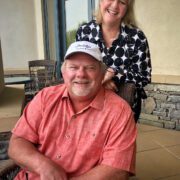The Matheson History Museum held a contest to name one of the two copper lions from the historic 1886 Alachua County Courthouse that now resides at the museum. The public chose “General Gaines” in honor of Gainesville’s namesake, General Edmund P. Gaines. The history behind the names of towns, streets, and buildings can be particularly special and fascinating, and Alachua County has its fair share of unique names. These names give wonderful insight into the county’s past.
A. Quinn Jones Center
The school, located on Northwest 7th Avenue, is named for Allen Quinn Jones, a long-time educator and leader of the Gainesville African-American community. He was born in Quincy, Florida, and graduated from Florida Agricultural and Mechanical University in 1915 at the top of his class. After six years of teaching in public schools across the state, he accepted the position of principal at Union Academy in Gainesville, which was the premier school for African-American students in the county at the time. At its closing, he became the first principal of its replacement, Lincoln High School. Under his leadership, the school became accredited in 1926 and was the second African-American high school in the state to do so. His home at 1013 NW 7th Ave. is now a museum and listed on the National Register of Historic Places.
Broward Hall

This residence hall opened in 1954 on the University of Florida campus and is named for Annie Douglass Broward, wife of the 19th Florida governor, Napoleon B. Broward. Annie helped organize the Florida Parent Teacher Association and was the founding president of the Jacksonville Women’s Club. She was also an advocate for civil rights, equal rights for women and child welfare laws.
Alfred A. Ring Park

The beautiful city park, located on Northwest 23rd Boulevard, is named for the man who donated the land, Alfred A. Ring. In 1947, he accepted a position at the University of Florida and helped found the real estate program. He became a local developer and textbook author and was heavily involved in the community, including at his church, Holy Trinity Episcopal.
Rosa B. Williams Recreation Center

The city recreation center, located at 524 NW 1st Street, was built on the same spot as the former Union Academy, the Freedmen’s school, which opened in Gainesville after the close of the Civil War. The center is named for a woman whose list of accomplishments is nearly endless. Rosa B. Williams was born in Starke and grew up on her family’s farm. She served on the Gainesville Commission on the Status of Women as well as the Shands board of directors, was the first vice president of Gainesville’s NAACP branch, co-founded the Reichert House and was the winner of the 1982 Gainesville Sun Community Service Award.
Kanapaha

Many place names in the area include the word “Kanapaha.” It is believed to be derived from the Timucua tribe’s word for “palmetto leaves” and “house.” Kanapaha was first used to describe an area in the 1817 Spanish land grant to Don Fernando de la Maza Arredondo, a merchant from Havana, Cuba. This land grant included much of what is today Alachua County.
William Reuben Thomas Center

The historic Thomas Center, which now houses an art gallery and the City of Gainesville offices, is named for a man who left quite a big mark on Gainesville. The building is made up of his former home, Sunkist Villa, and the hotel he built and operated, Hotel Thomas. The hotel’s opening festivities on January 10, 1928, were attended by Governor John W. Martin and mostof his cabinet. William Reuben Thomas was a Gainesville native, a graduate of East Florida Seminary, a teacher, a member of the Florida Senate and Gainesville mayor from 1901-1906. Under his leadership in 1905, the city delegation successfully lobbied the Florida legislature to choose Gainesville as the location for the new consolidated men’s college: the University of Florida.
Lake Wauburg

The 254-acre lake is named for Frederick Warburg (it’s unknown when the misspelling occurred), a German-Jewish banker who was hired by Moses Levy in the 1820s to help recruit Jewish families to settle thousands of acres in North Central Florida. Although this settlement never materialized, the Levy legacy lived on through his son, David Levy Yulee, who became the first Jewish member of the U.S. Senate and changed the face of Florida forever with his railroads. The lake was purchased in 1918 by the University YMCA, and in 1928, it was deeded to the University of Florida.
City of Archer

Originally known as Deer Hammock and later Darden’s Hammock, the name was changed because of David Levy Yulee’s Florida Railroad, which arrived in 1858. Yulee had a tradition of naming towns along the railroad in honor of stockholders or prominent Florida politicians. He chose the name Archer to honor Florida’s first secretary of state, James T. Archer.


